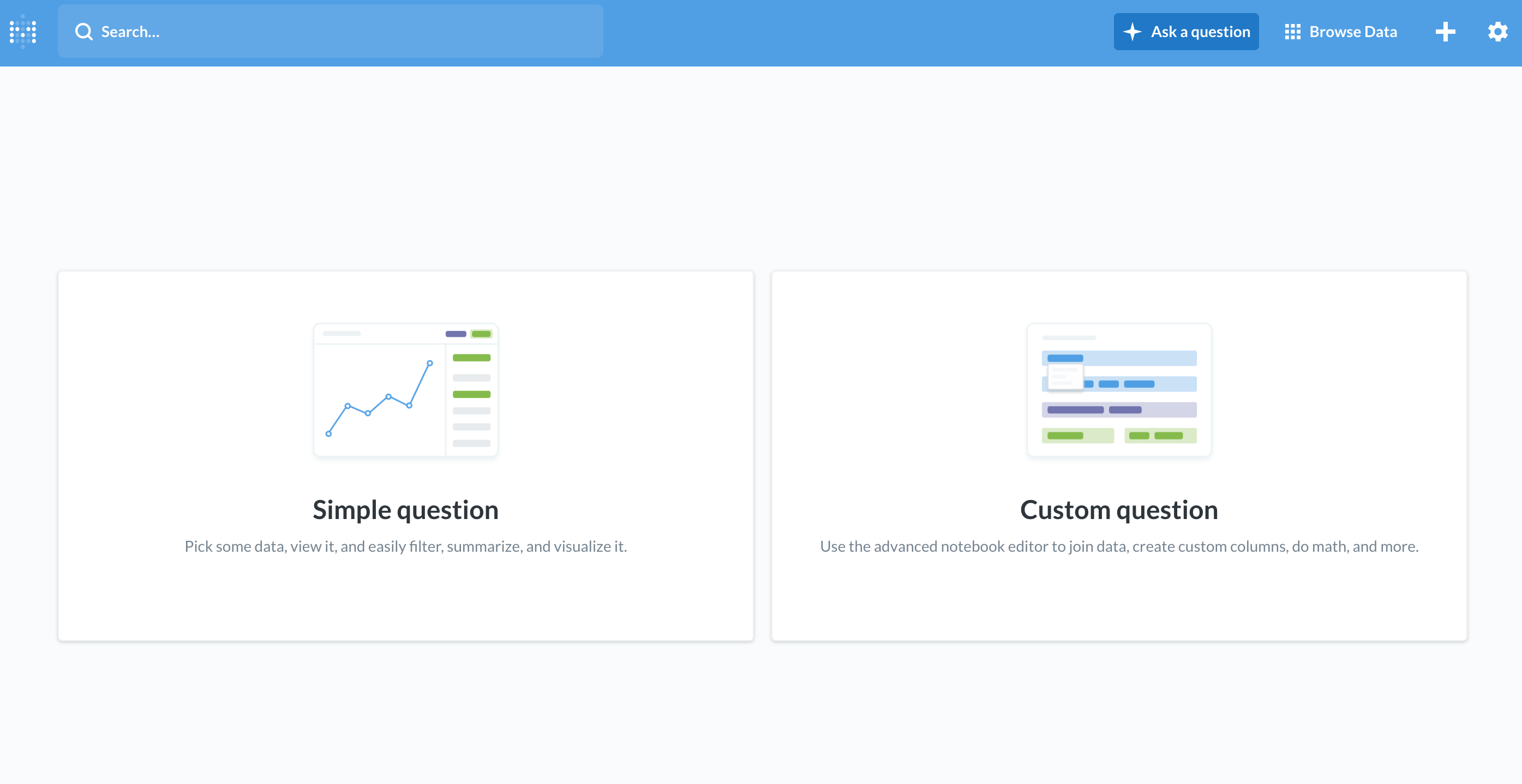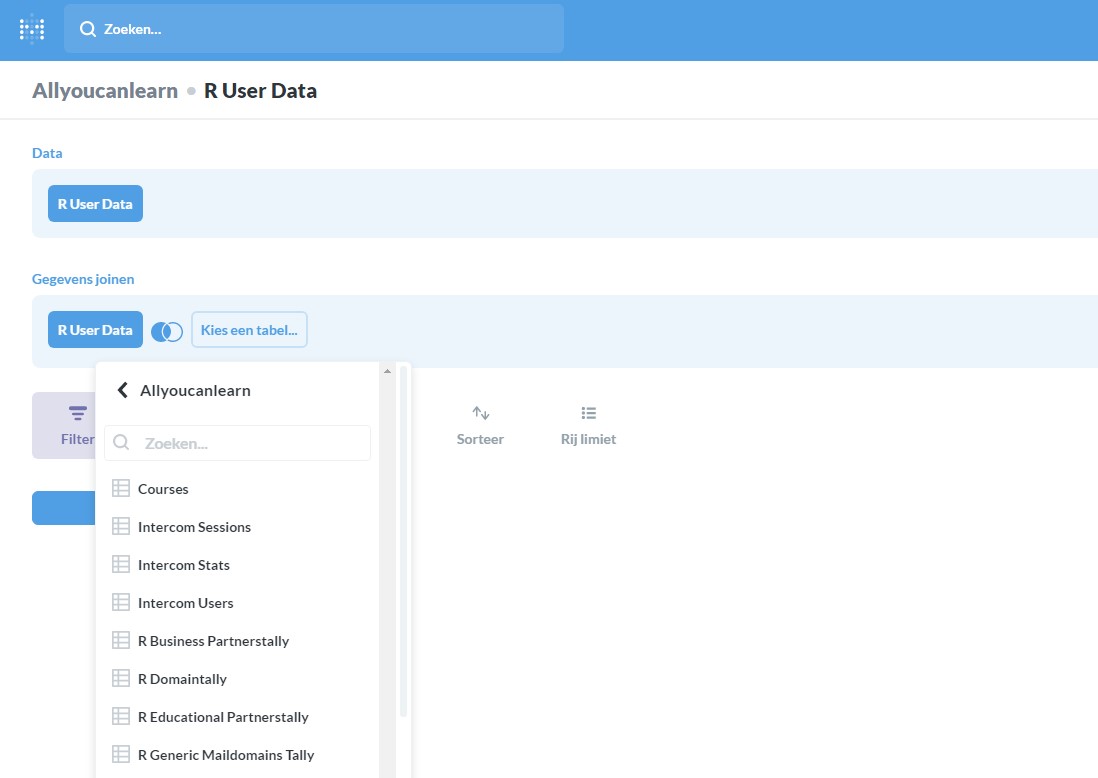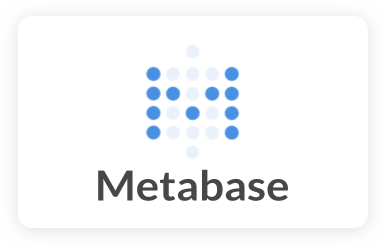This article covers some best practices for writing SQL queries for data analysts and data scientists. Most of our discussion will concern SQL in general, but we’ll include some notes on features specific to Metabase that make writing SQL a breeze.
Correctness, readability, then optimization: in that order
There are two ways to query Metabase data. The first option is to query data from a card, or a question you asked on the UI. In the UI, we can ask a question and query the data directly through the UI: Source: Metabase. Once we have created the question, we can check if this question shows up in the api/card. Another benefit of Metabase is that users must not be overly technical or skilled in interacting with databases using a declarative language like SQL to run queries. However, there is provision for power users who may want to run complex SQL queries as Metabase includes a SQL query engine that can be accessed directly from the UI. Use this forum to get assistance with understanding, editing, or using the IIS metabase including automating with ADSI or WMI Latest: Nov 07, 2019 06:08 AM Re: IIS6 Virtual STMP server and Content-Transfer-Encoding by Jalpa Panchal. Panoply automatically organizes data into query-ready tables and connects to popular BI tools like Metabase as well as analytical notebooks. From executives to analysts, your entire team will have access to the most up-to-date data and insights they need to drive. If the AllowPathInfoForScriptMappings metabase property is set to true (to support exclusive CGI functionality), PATHINFO will only contain '/zip' and ISAPI applications such as ASP will break. Query information stored in the string following the question mark (?) in the HTTP request.
The standard warning against premature optimization applies here. Avoid tuning your SQL query until you know your query returns the data you’re looking for. And even then, only prioritize optimizing your query if it’s run frequently (like powering a popular dashboard), or if the query traverses a large number of rows. In general, prioritize accuracy (does the query produce the intended results), and readability (can others easily understand and modify the code) before worrying about performance.
Make your haystacks as small as possible before searching for your needles
Arguably, we’re already getting into optimization here, but the goal should be to tell the database to scan the minimum number of values necessary to retrieve your results.
Part of SQL’s beauty is its declarative nature. Instead of telling the database how to retrieve records, you need only tell the database which records you need, and the database should figure out the most efficient way to get that information. Consequently, much of the advice about improving the efficiency of queries is simply about showing people how to use the tools in SQL to articulate their needs with more precision.
We’ll review the general order of query execution, and include tips along the way to reduce your search space. Then we’ll talk about three essential tools to add to your utility belt: INDEX, EXPLAIN, and WITH.
First, get to know your data
Familiarize yourself with your data before your write a single line of code. The iron law of GIGO holds (Garbage in, Garbage out), so study the metadata to make sure that a column really does contain the data you expect.
The SQL editor in Metabase features a handy data reference tab (accessible via the book icon), where you can browse through the tables in your database, and view their columns and connections (figure 1):
You can also view sample values for specific columns (figure 2).
Metabase gives you many different ways to explore your data: you can X-ray tables, compose simple and custom questions using the query builder and notebook editor, convert a saved question to SQL code, or build from an existing SQL question.
We’ll cover data exploration in an upcoming post. For now, let’s go through the general workflow of a query.
Developing your query
Everyone’s method will differ, but here’s an example workflow to follow when developing a query.
- As above, study the column and table metadata. If you’re using Metabase’s native query editor, you can also search for SQL snippets that contain SQL code for the table and columns you’re working with. Snippets allow you to see how other analysts have been querying the data. Or you can start a query from an existing SQL question.
- To get a feel for a table’s values, SELECT * from the tables you’re working with and LIMIT your results. Keep the LIMIT applied as you refine your columns (or add more columns via joins).
- Narrow down the columns to the minimal set required to answer your question.
- Apply any filters to those columns.
- If you need to aggregate data, aggregate a small number of rows and confirm that the aggregations are as you expect.
- Once you have a query returning the results you need, look for sections of the query to save as a Common Table Expression (CTE) to encapsulate that logic.
- With Metabase, you can also save code as a SQL snippet to share and reuse in other queries.
Now let’s move on to query execution.
The general order of query execution
Before we get into individual tips on writing SQL code, it’s important to have a sense of how databases will carry out your query — which differs from the “reading” order (left to right, top to bottom) you use to compose your query. Note that query optimizers can change the order of the following list, but this general lifecycle of a SQL query is good to keep in mind when writing SQL. We’ll use the execution order to group the tips on writing good SQL that follow.
The rule of thumb here is this: the earlier in this list you can eliminate data, the better.
- FROM (and JOIN) get(s) the tables referenced in the query. These tables represent the maximum search space specified by your query. Where possible, restrict this search space before moving forward.
- WHERE filters data.
- GROUP BY aggregates data.
- HAVING filters out aggregated data that doesn’t meet the criteria.
- SELECT grabs the columns (then deduplicates rows if DISTINCT is invoked).
- UNION merges the selected data into a results set.
- ORDER BY sorts the results.
And, of course, there will always be occasions where the query optimizer for your particular database will devise a different query plan, so don’t get hung up on this order.
Some query guidelines (not rules)
The following tips are guidelines, not rules, intended to keep you out of trouble. Each database handles SQL differently, has a slightly different set of functions, and takes different approaches to optimizing queries. And that’s before we even get into comparing traditional transactional databases with analytics databases that use columnar storage formats, which have vastly different performance characteristics.
Comment your code, especially the why
Help people out (including yourself three months from now) by adding comments that explain different parts of the code. The most important thing to capture here is the “why.” For example, it’s obvious that the code below filters out orders with ID greater than 10, but the reason it’s doing that is because the first 10 orders are used for testing.
The catch here is that you introduce a little maintenance overhead: if you change the code, you need to make sure that the comment is still relevant and up to date. But that’s a small price to pay for readable code.
FROM
Join tables using the ON keyword
Although it’s possible to “join” two tables using a WHERE clause (that is, to perform an implicit join, like SELECT * FROM a,b WHERE a.foo = b.bar), you should instead prefer an explicit JOIN:
Mostly for readability, as the JOIN + ON syntax distinguishes joins from WHERE clauses intended to filter the results.
Alias multiple tables
When querying multiple tables, use aliases, and employ those aliases in your select statement, so the database (and your reader) doesn’t need to parse which column belongs to which table. Note that if you have columns with the same name across multiple tables, you will need to explicitly reference them with either the table name or alias.
Avoid
Prefer
This is a trivial example, but when the number of tables and columns in your query increases, your readers won’t have to track down which column is in which table. That and your queries might break if you join a table with an ambiguous column name (e.g., both tables include a field called Created_At.
Note that Field Filters are incompatible with table aliases, so you’ll need to remove aliases when connecting filter widgets to your Field Filters.
WHERE
Filter with WHERE before HAVING
Use a WHERE clause to filter superfluous rows, so you don’t have to compute those values in the first place. Only after removing irrelevant rows, and after aggregating those rows and grouping them, should you include a HAVING clause to filter out aggregates.
Avoid functions on columns in WHERE clauses
Using a function on a column in a WHERE clause can really slow down your query, as the function makes the query non-sargable (i.e., it prevents the database from using an index to speed up the query). Instead of using the index to skip to the relevant rows, the function on the column forces the database to run the function on each row of the table.
And remember, the concatenation operator || is also a function, so don’t get fancy trying to concat strings to filter multiple columns. Prefer multiple conditions instead:
Avoid
Prefer
Prefer = to LIKE
This is not always the case. It’s good to know that LIKE compares characters, and can be paired with wildcard operators like %, whereas the = operator compares strings and numbers for exact matches. The = can take advantage of indexed columns. This isn’t the case with all databases, as LIKE can use indexes (if they exist for the field) as long as you avoid prefixing the search term with the wildcard operator, %. Which brings us to our next point:
Avoid bookending wildcards in WHERE statements
Using wildcards for searching can be expensive. Prefer adding wildcards to the end of strings. Prefixing a string with a wildcard can lead to a full table scan.
Avoid
Prefer
Prefer EXISTS to IN
If you just need to verify the existence of a value in a table, prefer EXISTS to IN, as the EXISTS process exits as soon as it finds the search value, whereas IN will scan the entire table. IN should be used for finding values in lists.
Similarly, prefer NOT EXISTS to NOT IN.
GROUP BY

Order multiple groupings by descending cardinality
Where possible, GROUP BY columns in order of descending cardinality. That is, group by columns with more unique values first (like IDs or phone numbers) before grouping by columns with fewer distinct values (like state or gender).
HAVING

Only use HAVING for filtering aggregates
And before HAVING, filter out values using a WHERE clause before aggregating and grouping those values.
Metabase Query Code
SELECT
SELECT columns, not stars
Specify the columns you’d like to include in the results (though it’s fine to use * when first exploring tables — just remember to LIMIT your results). Free full software download.
UNION
Prefer UNION All to UNION
If duplicates are not an issue, UNION ALL won’t discard them, and since UNION ALL isn’t tasked with removing duplicates, the query will be more efficient.
ORDER BY
Avoid sorting where possible, especially in subqueries
Sorting is expensive. If you must sort, make sure your subqueries are not needlessly sorting data.
INDEX
This section is for the database admins in the crowd (and a topic too large to fit in this article). One of the most common things folks run into when experiencing performance issues in database queries is a lack of adequate indexing.
Which columns you should index usually depends on the columns you’re filtering by (i.e., which columns typically end up in your WHERE clauses). If you find that you’re always filtering by a common set of columns, you should consider indexing those columns.
Adding indexes
Indexing foreign key columns and frequently queried columns can significantly decrease query times. Here’s an example statement to create an index:
There are different types of indexes available, the most common index type uses a B-tree to speed up retrieval. Check out our article on making dashboards faster, and consult your database’s documentation on how to create an index.
Use partial indexes
For particularly large datasets, or lopsided datasets, where certain value ranges appear more frequently, consider creating an index with a WHERE clause to limit the number of rows indexed. Partial indexes can also be useful for date ranges as well, for example if you want to index the past week of data only.
Use composite indexes

For columns that typically go together in queries (such as last_name, first_name), consider creating a composite index. The syntax is similar to creating a single index. For example:
EXPLAIN
Look for bottlenecks
Some databases, like PostgreSQL, offer insight into the query plan based on your SQL code. Simply prefix your code with the keywords EXPLAIN ANALYZE. You can use these commands to check your query plans and look for bottlenecks, or to compare plans from one version of your query to another to see which version is more efficient.

Here’s an example query using the dvdrental sample database available for PostgreSQL.
And the output:

You’ll see milliseconds required for planning time, execution time, as well as the cost, rows, width, times, loops, memory usage, and more. Reading these analyses is somewhat of an art, but you can use them to identify problem areas in your queries (such as nested loops, or columns that could benefit from indexing), as you refine them.
Here’s PostreSQL’s documentation on using EXPLAIN.
WITH
Organize your queries with Common Table Expressions (CTE)
Use the WITH clause to encapsulate logic in a common table expression (CTE). Here’s an example of a query that looks for the products with the highest average revenue per unit sold in 2018, as well as max and min values.
The WITH clause makes the code readable, as the main query (what you’re actually looking for) isn’t interrupted by a long sub query.
You can also use CTEs to make your SQL more readable if, for example, your database has fields that are awkwardly named, or that require a little bit of data munging to get the useful data. For example, CTEs can be useful when working with JSON fields. Here’s an example of extracting and converting fields from a JSON blob of user events.
Alternatively, you could save a subquery as a SQL snippet (figure 3 - note the parentheses around the snippet), to easily reuse that code in other queries.
And yes, as you might expect, the Aerodynamic Leather Toucan fetches the highest average revenue per unit sold.
With Metabase, you don’t even have to use SQL
SQL is amazing. But so is Metabase’s query builder and notebook editor. You can compose queries using Metabase’s graphical interface to join tables, filter and summarize data, create custom columns, and more. And with custom expressions, you can handle the vast majority of analytical use cases, without ever needing to reach for SQL. Questions composed using the notebook editor also benefit from automatic drill-through, which allows viewers of your charts to click through and explore the data, a feature not available to questions written in SQL.
Metabase Query Format
Glaring errors or omissions?
Metabase Query Parameters
There are libraries of books on SQL, so we’re only scratching the surface here. You can share the secrets of your SQL sorcery with other Metabase users on our forum.
